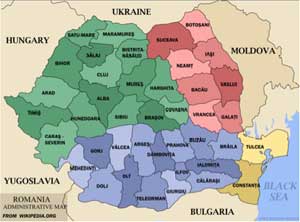|
|
|
|
Analysis of Migrant Interview
The highest point of the social crisis was in 1989 the Romanian Revolution or the “first line revolution” (first line of the Communist bloc). It went under the “most fundamental change of Central and Eastern Europe” (Kupiszewski, et al). A year later Romania was free from the control Communist government (many of the members stayed on, though) and were now allowed to travel freely outside their boarders (Simina). This scared Europe. Romanians, especially Gypsies (which Doru is not) flooded Europe in 1990’s- Germany and Czechoslovakia were the first two countries to restrict Romanian migrant’s rights, and expelled many. Austria was next (Simina). Doru had a friend who was sponsored by a friend in Austria before Doru even attempted to migrate; actually it was this friend that tempted Doru to flee Romania when he told him how incredible the shopping was in Vienna, Austria- how wonderful the capitalist system was. Just as Sassen reports, the decision to migrate is a personal choice, but "the option to migrate is itself the product of larger social, economic, and political processes...and the aggressive campaign during the Cold War years touting the West as a place where economic well-being is the norm and well-paying jobs are easy to get must also have had some effect in inducing people to migrate westward." Doru has found this for himself, securing a good-paying job, a nice home and car, and has sent two daughters to college. As Dinu states in Lehrer and Sloan's Crossing the Valley, "We found (American people) extraordinary. Willing to help (225)," Doru was also very surprised by American's niceness- he says he has never been discriminated against, and was surprised people were always smiling at him. While people sometimes makes fun of his accent, he takes it in stride. In Kumar's "Passport Photos" she says, "...it is in language that all immigrants are defined and in which we all struggle for an identity...it is in a broken language that we must find refuge." Doru, after his wife and children joined him in the US, resolved to speak only English while at home with the family, to help overcome the language barrier he faced. According to the 2000 US Census 367,310 Americans indicated Romanian as their first ancestry. Half of all foreign-born Romanian-Americans came to the U.S. after 1980. Per the 2000 Census, the States with the largest concentrations of Romanian-Americans are California (56,789), New York (51,380), Florida (28,581), Michigan (26,857) and Ohio (26,017).
Citations: Ovidiu Laurian Simina, “Romania – Source Country and Transit Country for International Migration” http://www.wider.unu.edu/conference/conference-2003/conference%20papers/simina.pdf
Marek Kupiszewski, Diana Berinde, Virginia Teodorescu, Helen Durham, Philip Rees “Internal Migration and regional Population Dynamics in Europe: Romanian Case Study” http://www.medalus.leeds.ac.uk/wpapers/97-7.pdf
Amitava Kumar, "Passport Photos" https://myasucourses.asu.edu/courses/1/2006Spring-ASB340-SBS450-SOC331- Koptiuch/content/_374311_1/Kumar_Language.pdf
Warren Lehrer, Judith Sloan, "Crossing the Boarder" 2003
Saskia Sassen, "Why Migration?" https://myasucourses.asu.edu/courses/1/2006Spring- ASB340-SBS450-SOC331-Koptiuch/content/_374309_1/Sassen_WhyMigration.pdf
|

 Romania
was under what was known as the under the “Iron Curtain” after WWII
but the first to get rid of Soviet troops. It was also first with a
diplomatic and commercial relationship with Western Europe- but from
the mismanagement of those ventures, economic and social crisis
emerged became pointed in the Eighties (Simina). This is when Doru
decides to migrate.
Romania
was under what was known as the under the “Iron Curtain” after WWII
but the first to get rid of Soviet troops. It was also first with a
diplomatic and commercial relationship with Western Europe- but from
the mismanagement of those ventures, economic and social crisis
emerged became pointed in the Eighties (Simina). This is when Doru
decides to migrate.